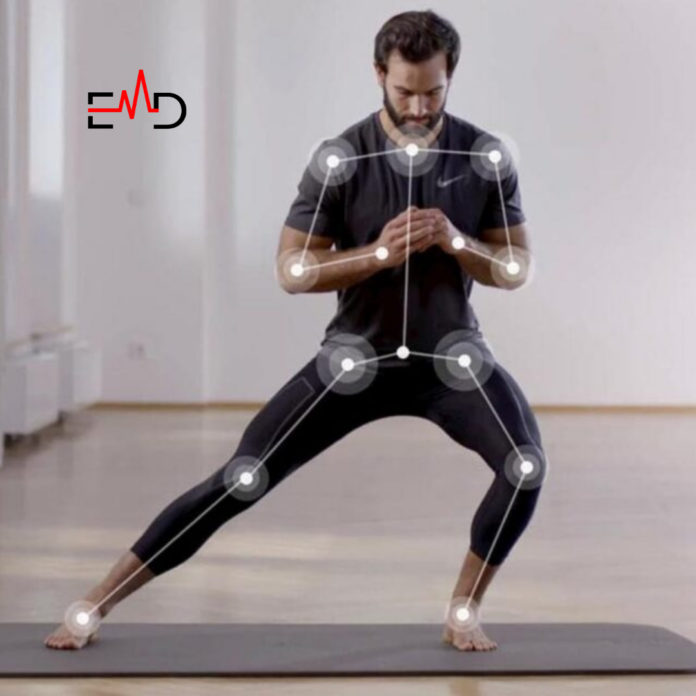Exercise Daily – In recent years, the fitness industry has seen a significant transformation with the integration of artificial intelligence (AI) into workout routines. AI-powered workouts are revolutionizing the way people exercise by offering personalized and adaptive training experiences. This article delves into the exciting world of AI-powered workouts, exploring how this technology is shaping the future of fitness.
The fitness industry has seen significant advancements over the years, with technological innovations revolutionizing the way we exercise. One such innovation that is gaining traction is AI-powered workouts. Artificial intelligence has made its way into various aspects of our lives, and now it’s making its mark in the fitness world. AI-powered workouts offer a personalized and efficient approach to fitness, combining the power of data analytics, machine learning, and smart devices.
The Rise of AI in Fitness
Over the past decade, AI has permeated various industries and fitness is no exception. The integration of AI algorithms and machine learning techniques into fitness applications has paved the way for innovative training experiences. AI-powered workouts leverage data analysis, predictive modeling, and pattern recognition to provide users with personalized exercise routines.
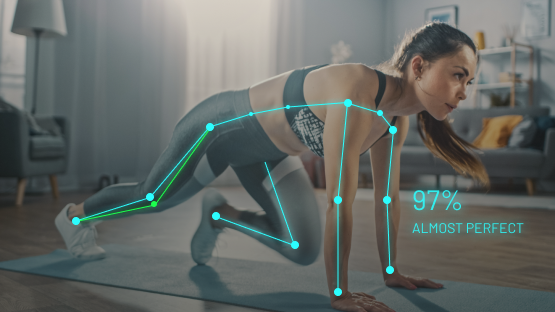
AI-Powered Workouts
AI powered workouts utilize sophisticated algorithms to analyze user data and provide tailored exercise plans. These workouts take into account individual fitness levels, goals, preferences, and even biometric data. By continuously learning from user inputs and performance, AI algorithms can dynamically adjust training programs to optimize results.
Traditional workout routines often follow a one-size-fits-all approach, whereas AI-powered workouts adapt to individual needs, goals, and preferences. By analyzing vast amounts of data and using machine learning algorithms, AI systems can provide tailored exercise programs and real-time feedback.
Benefits of AI Powered Workouts
1. Customized Training Programs
AI-powered workouts offer customized training programs that are tailored to individual needs. These programs consider factors such as fitness level, age, body composition, and specific goals. By personalizing the exercises, intensity, and duration, AI enables users to achieve optimal results.
2. Real-Time Feedback and Analysis
AI algorithms provide real-time feedback during workouts. Through sensors and connected devices, users receive guidance on proper form, posture, and technique. Additionally, AI analyzes data in real time, allowing users to track their progress and make necessary adjustments to optimize performance.
3. Enhanced Motivation and Accountability
AI-powered workouts incorporate gamification elements to enhance motivation and accountability. Features like virtual coaches, challenges, and rewards create an engaging and competitive environment, encouraging users to stay committed to their fitness goals.
4. Preventing Injuries and Ensuring Safety
By analyzing user data and form, AI algorithms can detect potential injury risks and provide real-time suggestions to avoid them. This proactive approach helps users exercise safely and reduces the likelihood of workout-related injuries.
5. AI-Powered Wearables and Devices
AI integration extends beyond fitness apps and into wearable devices. Smartwatches, fitness bands, and other wearables equipped with AI technology track various metrics such as heart rate, calorie expenditure, and sleep patterns. This data enables users to gain valuable insights into their overall health and well-being.
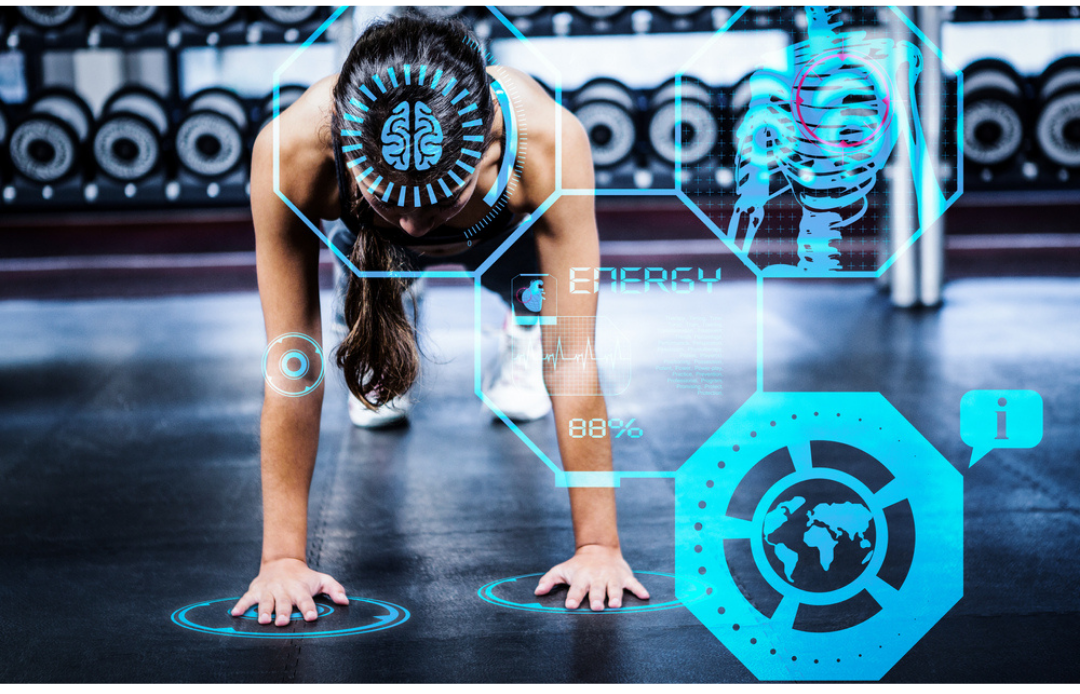
Challenges and Limitations of AI in Fitness
While AI-powered workouts offer numerous benefits, there are also challenges and limitations to consider. AI algorithms heavily rely on accurate data, which can be a challenge if the input is inaccurate or incomplete. Privacy and data security concerns also arise when sharing personal information for AI analysis. Additionally, AI may not fully replace human trainers in terms of emotional support, adaptability to unforeseen circumstances, and the ability to modify exercises in real-time.
Ethical Considerations
The integration of AI in fitness raises ethical considerations. Safeguarding user privacy and ensuring data protection should be a top priority for AI-powered fitness platforms. Transparency in how data is collected, stored, and used is essential to build trust between users and AI systems.
AI-Coached Athletes: The Next Generation of Sports Performance
AI coaching refers to the use of intelligent algorithms and data analysis to enhance an athlete’s training experience. It involves collecting and analyzing vast amounts of data, including player statistics, biometric measurements, and performance metrics. AI algorithms then process this information to provide personalized insights, real-time feedback, and tailored training programs for athletes.
Leveraging Big Data and Analytics
One of the key factors driving the rise of AI-coached athletes is the availability of big data and advanced analytics. With sensors, wearables, and tracking technologies becoming more prevalent in sports, an immense amount of data is generated during training sessions and competitive matches. AI algorithms can harness this data to identify patterns, analyze performance trends, and provide valuable recommendations for improvement.
The Benefits of AI Coaching
1. Personalized Training Programs
AI-coached athletes receive personalized training programs based on their individual needs and goals. By analyzing an athlete’s strengths, weaknesses, and performance data, AI algorithms can design training regimens tailored to maximize their potential. This personalized approach ensures that athletes can focus on areas that need improvement while optimizing their overall performance.
2. Real-Time Feedback and Performance Analysis
AI coaching provides real-time feedback to athletes during training sessions and competitions. Sensors and wearables capture data on various parameters such as speed, acceleration, heart rate, and technique. This data is processed instantly, allowing athletes and their coaches to make informed decisions on the spot. Athletes can receive feedback on their form, suggest adjustments, and track their progress over time.
3. Injury Prevention and Recovery
AI-coached athletes benefit from injury prevention and recovery strategies. By monitoring biomechanics and physiological data, AI algorithms can detect early signs of fatigue, stress, or potential injuries. Coaches and sports scientists can intervene promptly, adjusting training loads and providing targeted recovery strategies. This proactive approach minimizes the risk of injuries, enabling athletes to stay at their peak performance for longer durations.
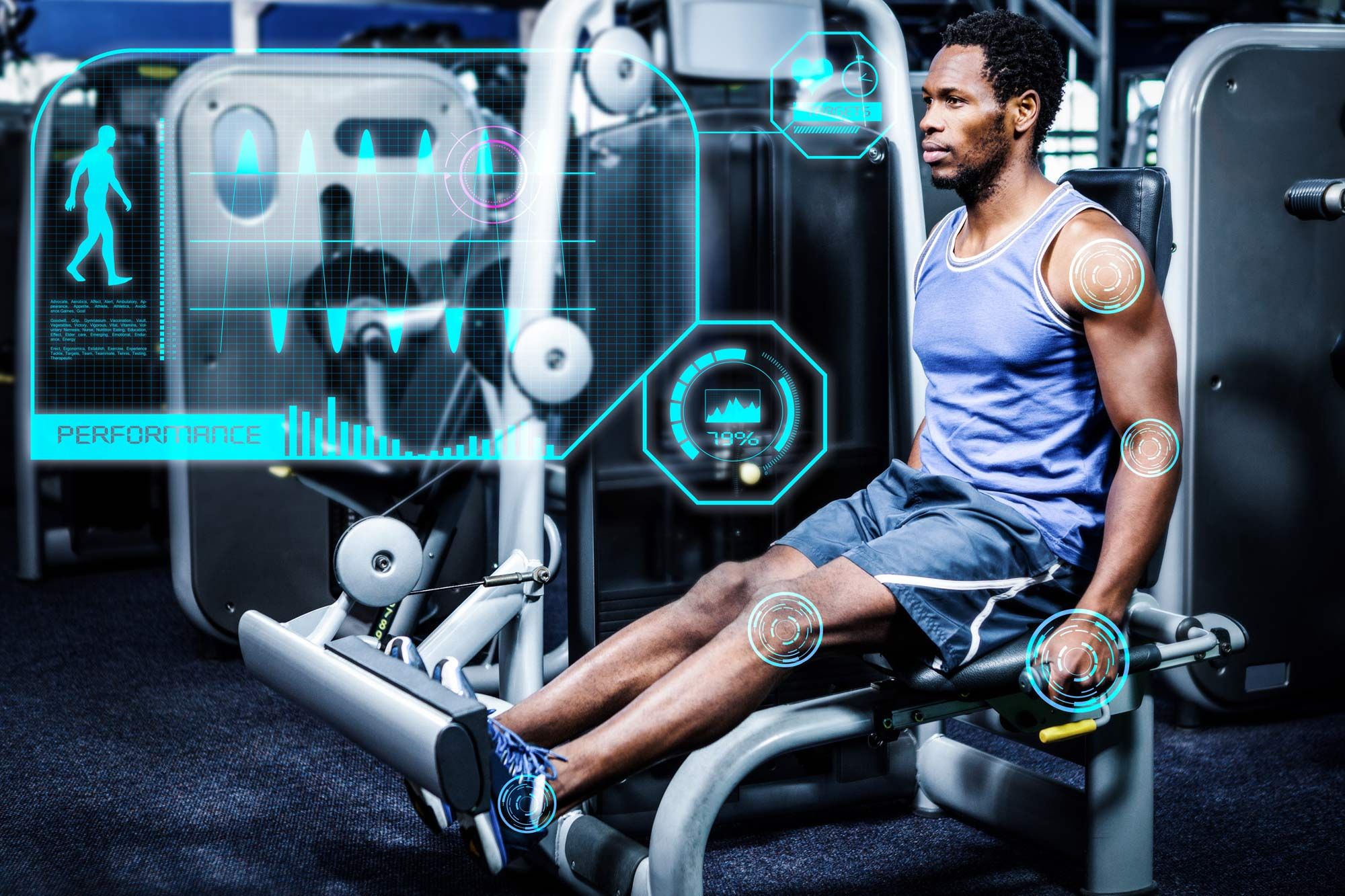
Challenges and Ethical Considerations
1. Data Privacy and Security
With the collection and analysis of extensive athlete data, privacy and security concerns arise. It is crucial to establish robust data protection measures to ensure that sensitive information remains secure and that athletes’ privacy rights are respected. Organizations and AI developers must prioritize data encryption, consent mechanisms, and transparent data handling practices.
2. Maintaining the Human Element
While AI coaching offers numerous benefits, it is important to strike a balance between technology and the human element in sports. Athletes may rely heavily on AI recommendations, but the expertise and experience of human coaches cannot be replaced entirely. Human intervention and guidance are still essential for comprehensive athlete development and to provide emotional support and motivation.
AI-Coaching Technologies in Different Sports
1. Football
In football, AI coaching technologies are transforming how players and teams prepare for matches. AI systems analyze vast amounts of video footage to identify patterns, such as player movements and defensive strategies. This analysis enables coaches to devise effective game plans, optimize training routines, and even predict opponent tactics.
2. Tennis
AI-coached tennis players benefit from real-time analysis of theirplaying style, shot selection, and court coverage. Using machine learning algorithms, AI systems can provide insights into opponents’ weaknesses, suggest strategic adjustments during matches, and help players improve their overall performance.
3. Basketball
AI coaching in basketball involves analyzing player movements, ball tracking, and team strategies. By collecting and processing data from multiple sources, AI systems can offer real-time recommendations on offensive and defensive plays, optimize rotations and substitutions, and provide insights into player performance and workload management.
4. Swimming
In swimming, AI-coaching technologies track swimmers’ technique, stroke efficiency, and race strategies. Using underwater cameras and sensors, AI systems can analyze and provide feedback on factors like body position, stroke rate, and turn efficiency. This allows swimmers to refine their technique and optimize their performance in the pool.

Overcoming Challenges in AI Coaching
While AI-coaching technologies hold immense potential, there are challenges that need to be addressed for their successful integration:
1. Trust and Human Element
Athletes and coaches need to trust AI systems and feel confident in their recommendations. Building trust and maintaining a human element in coaching relationships is crucial to ensure effective collaboration between athletes, coaches, and AI systems.
2. Data Privacy and Ethics
As AI systems collect and analyze large amounts of personal data, privacy and ethical concerns arise. Safeguarding athletes’ data and adhering to strict ethical guidelines are essential to maintain the integrity and trustworthiness of AI-coaching technologies.
3. Adaptability to Individual Athletes
Each athlete is unique, with specific strengths, weaknesses, and learning styles. AI coaching must be adaptable and consider individual differences to provide personalized recommendations and training programs that suit each athlete’s needs.
The Future of AI-Coached Athletes
The future of AI-coached athletes looks promising. As technology continues to advance, AI systems will become more sophisticated in their analysis, prediction, and decision-making capabilities. Athletes can expect even more personalized coaching, precise performance insights, and innovative training methods. AI will continue to push the boundaries of sports performance, helping athletes achieve new levels of excellence.
AI vs. Human Trainers: Finding the Right Balance
AI-powered workouts should be viewed as a complementary tool rather than a complete replacement for human trainers. While AI can provide personalized guidance, human trainers offer emotional support, adaptability, and the ability to modify exercises on the spot. Finding the right balance between AI and human interaction can lead to a holistic and effective fitness experience.
The Future of AI-Powered Workouts
As technology continues to advance, the future of AI-powered workouts looks promising. AI algorithms will become more sophisticated, offering even more accurate and personalized training programs. The integration of virtual reality (VR) and augmented reality (AR) into AI-powered workouts will create immersive fitness experiences. Moreover, AI could play a crucial role in preventive healthcare by identifying early signs of health issues and offering targeted exercise interventions.
AI is Revolutionizing the Fitness Industry
Artificial intelligence refers to the simulation of human intelligence in machines, enabling them to perform tasks that typically require human intelligence. In the fitness industry, AI is employed to provide personalized experiences, optimize training programs, track progress, and enhance overall fitness outcomes.
1. AI-Powered Personalized Workout Programs
AI has revolutionized workout programs by offering tailored routines based on an individual’s unique characteristics, goals, and preferences. By analyzing data such as body composition, fitness level, and exercise history, AI algorithms can generate personalized workout plans that maximize results and minimize the risk of injury. These programs adapt and evolve over time, ensuring continuous optimization and progress.
2. Enhanced Fitness Tracking and Analysis
AI enables the collection and analysis of vast amounts of fitness data, allowing for more comprehensive tracking and analysis of workouts. Wearable devices equipped with AI technology can monitor vital signs, movement patterns, and even sleep quality. This data is then analyzed to provide valuable insights into an individual’s performance, recovery, and overall health, empowering users to make informed decisions about their fitness journey.
3. Virtual Training and Coaching
Thanks to AI, virtual training and coaching have become increasingly popular. Additionally, AI-powered platforms and mobile applications offer interactive virtual training sessions, providing real-time feedback, guidance, and motivation. Moreover, users can access expert trainers and coaches from anywhere, making fitness more accessible and convenient.
4. AI-Driven Fitness Equipment
AI has transformed traditional fitness equipment into smart devices. Intelligent machines equipped with sensors and AI algorithms can adjust resistance levels, monitor form and technique, and provide real-time feedback to users. These innovations enhance safety, improve performance, and optimize training effectiveness.
5. Preventive and Diagnostic Health Monitoring
AI technology is utilized for preventive and diagnostic health monitoring, promoting overall well-being. By analyzing data from various sources, including wearables, AI algorithms can identify patterns, detect abnormalities, and provide early warnings for potential health issues. This proactive approach empowers individuals to take necessary actions to maintain their health and prevent future complications.
6. Social Fitness Communities
AI-powered platforms have facilitated the formation of social fitness communities, connecting individuals with similar goals and interests. These communities provide support, motivation, and a sense of camaraderie. AI algorithms help curate personalized recommendations and facilitate interactions, fostering a vibrant and engaging fitness ecosystem.
7. AI for Nutrition and Diet Planning
AI has also made significant strides in nutrition and diet planning. By analyzing an individual’s dietary preferences, nutritional needs, and health goals, AI algorithms can generate personalized meal plans and suggest healthier alternatives. This technology assists individuals in making informed choices, optimizing their nutrition, and achieving their fitness objectives.
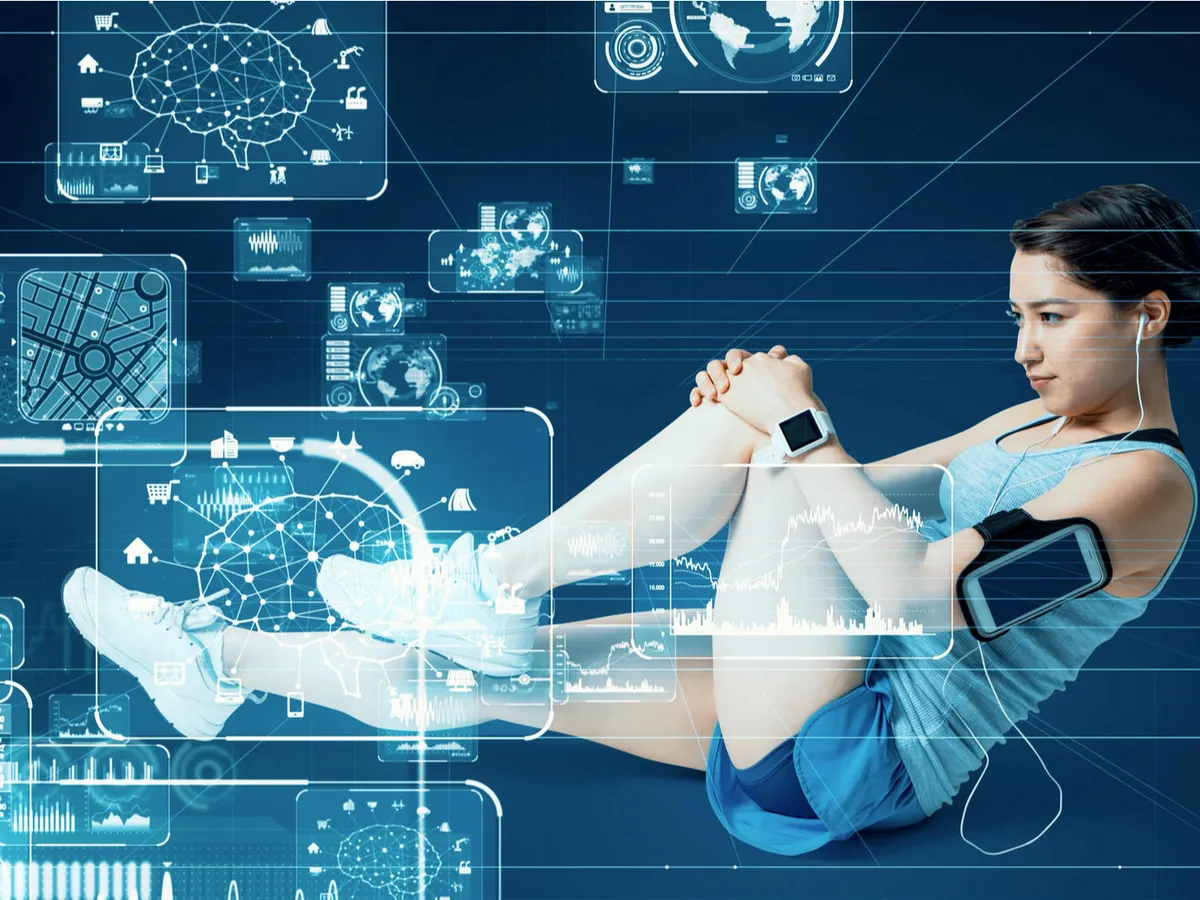
Challenges and Limitations of AI in Fitness
While AI brings numerous benefits to the fitness industry, it also faces certain challenges and limitations. One primary concern is privacy and data security. As AI relies on collecting and analyzing personal data, it is essential to ensure robust security measures are in place to protect user information.
Another challenge is the potential for overreliance on AI technology. While AI can provide valuable insights and recommendations, it is crucial for individuals to maintain a balance between technology and human intuition. Personalized human guidance and expertise remain vital for comprehensive fitness programs.
Additionally, the accessibility of AI-powered fitness solutions needs to be addressed. While technology advances, it is essential to bridge the digital divide and ensure that AI-based fitness tools are accessible to people of all backgrounds and socioeconomic statuses.
Ethical Considerations
As AI continues to revolutionize the fitness industry, ethical considerations must be taken into account. The responsible use of AI requires transparency, accountability, and fairness. It is important to ensure that AI algorithms and systems are unbiased and do not perpetuate discrimination or exclusion.
Moreover, the ethical use of personal data collected by AI systems is crucial. Clear consent mechanisms and stringent data protection policies must be in place to safeguard user privacy and prevent misuse of information.
Conclusion
AI-powered workouts represent the future of fitness, providing personalized, adaptive, and engaging training experiences. These workouts offer numerous benefits, including customized training programs, real-time feedback, enhanced motivation, injury prevention, and AI-powered wearables. However, it’s important to address challenges, ethical considerations, and find the right balance between AI and human trainers. With ongoing advancements, AI-powered workouts will continue to reshape the fitness industry, empowering individuals to achieve their fitness goals more effectively.
FAQs (Frequently Asked Questions)
1. Are AI-powered workouts suitable for all fitness levels?
Yes, AI-powered workouts can be customized for individuals of various fitness levels, from beginners to advanced athletes. The AI algorithms adapt the training programs to the user’s capabilities and goals.
2. Can AI-powered workouts replace the need for human trainers?
While AI-powered workouts offer personalized guidance, human trainers provide emotional support and adaptability that AI may not fully replicate. It’s best to find a balance between AI and human interaction for an optimal fitness experience.
3. How does AI prevent injuries during workouts?
AI algorithms analyze user data and form in real-time. By detecting potential injury risks, AI can provide real-time suggestions and corrections to help users exercise safely and reduce the likelihood of injuries.
4. Do I need specialized equipment for AI-powered workouts?
AI-powered workouts can be performed with or without specialized equipment. Some workouts rely on AI-powered wearables, such as smartwatches or fitness bands, while others utilize smartphone apps that analyze motion and provide feedback.
5. Can AI-powered workouts track my progress over time?
Yes, AI-powered workouts track user progress over time. By analyzing data such as performance metrics, duration, and intensity, users can monitor their progress and make informed adjustments to their training programs.

